Sometimes you see something that takes your breath away, maybe even makes your eyes moist. That happened when I saw this photo one morning:
Photography has been one of my hobbies since I was a child, and I’ve enjoyed it all these years. Recently I was inspired by the growing ease of aerial photography using model aircraft, and now can fly two short-range RC quadcopters. That photo came from the first one, and despite being a low-res 1280×720 camera, tha image of our home in the yellow glow of sunrise brought a deep feeling a beauty and peace.
Somehow seeing our home surrounded by the beauty of the immense wheat fields and green pastures drives home how small we all are in comparison to the vastness of the earth, and how lucky we are to inhabit this beautiful planet.
As the sun starts to come up over the pasture, the only way you can tell the height of the grass at 300ft is to see the shadow it makes on the mowed pathway Laura and I use to get down to the creek.
This is a view of our church in a small town nearby — the church itself is right in the center of the photo. Off to the right, you see the grain elevators that can be seen for miles across the Kansas prairie, and of course the fields are never all that far off in the background.
Here you can see the quadcopter taking off from the driveway:
And here it is flying over my home church out in the country:
That’s the country church, at the corner of two gravel roads – with its lighted cross facing east that can be seen from a mile away at night. To the right is the church park, and the green area along the road farther back is the church cemetery.
Sometimes we get in debates about environmental regulations, politics, religion, whatever. We hear stories of missiles, guns, and destruction. It is sad, this damage we humans inflict on ourselves and our earth. Our earth — our home — is worth saving. Its stunning beauty from all its continents is evidence enough of that. To me, this photo of a small corner of flat Kansas is proof enough that the home we all share deserves to be treated well, and saved so that generations to come can also get damp eyes viewing its beauty from a new perspective.
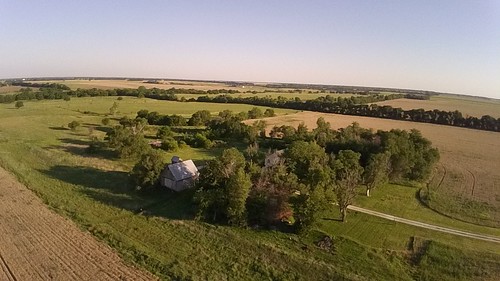
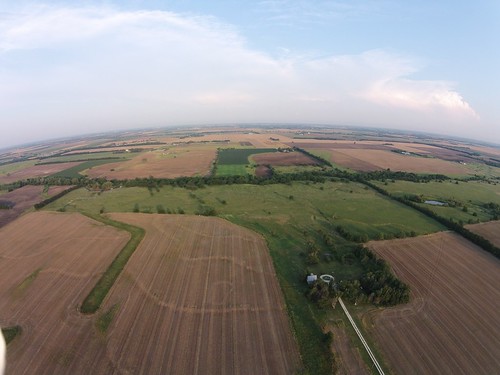

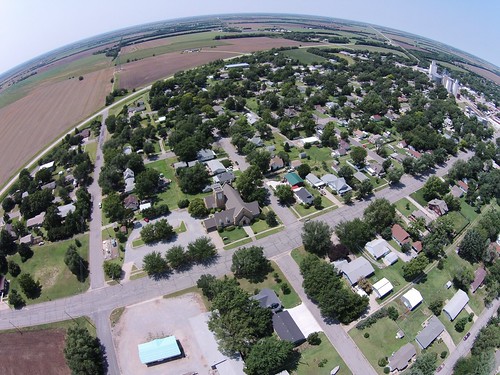
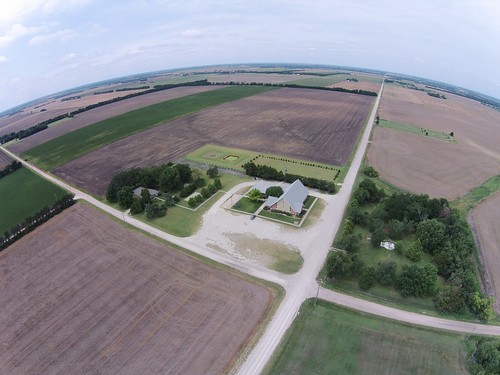
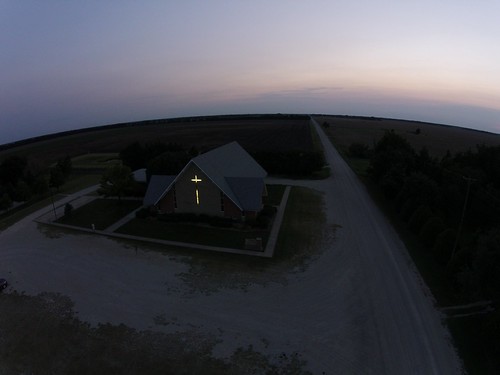
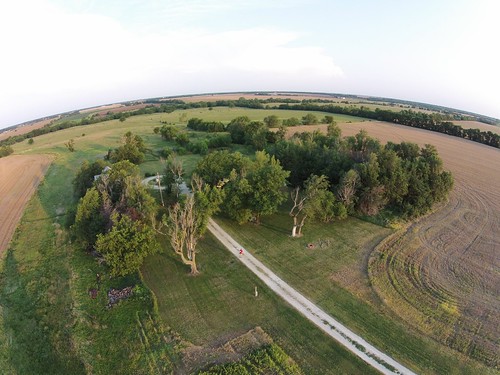
Hi John,
on the second picture, there a some strange lines on the brown fields. Do you know something about them?
Good question! Yes, I do. Those brown fields are wheat fields, and the wheat was harvested a few years ago. The thicker mostly-straight lines with curves at the ends are the tracks left by the combine (the harvesting machine). The wheat is also planted in rows, so you can see them. The last photo shows both – the thicker lines where the combine trampled the plants, and the thinner lines reflecting the rows.